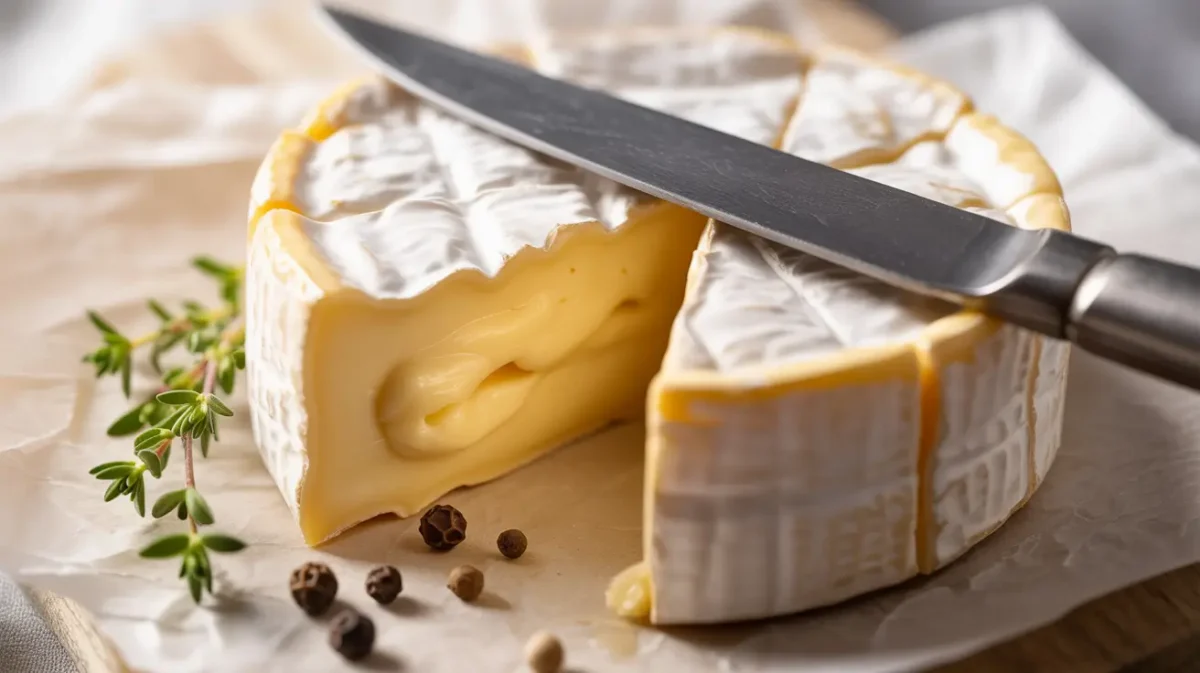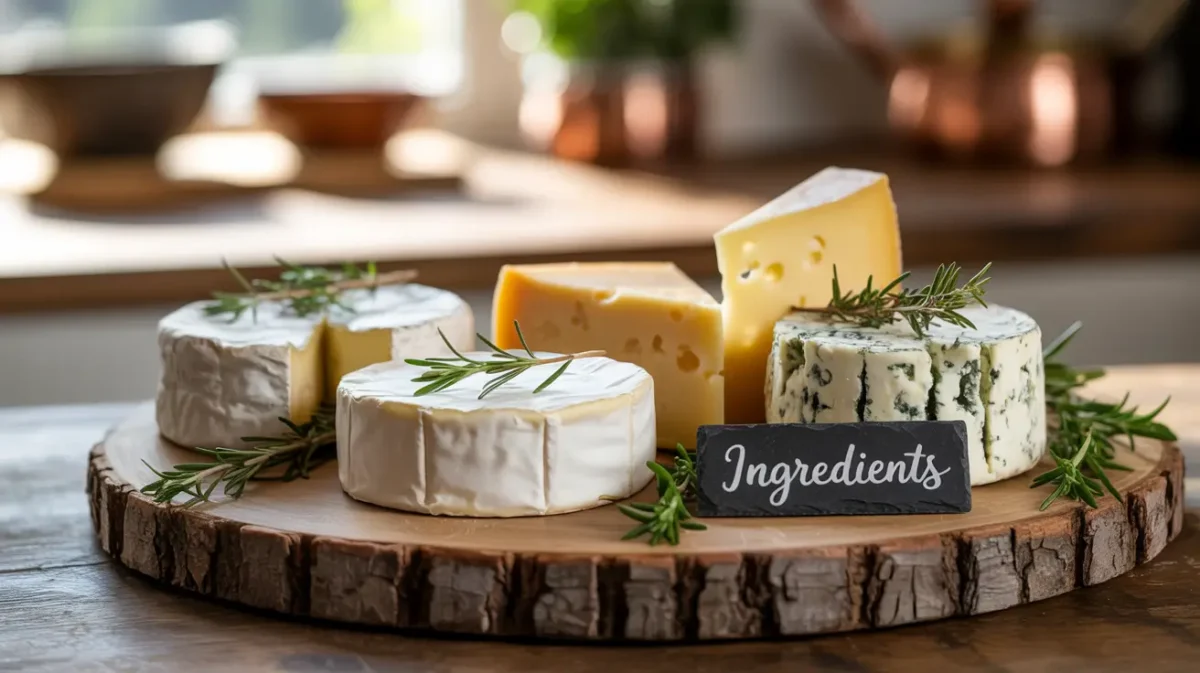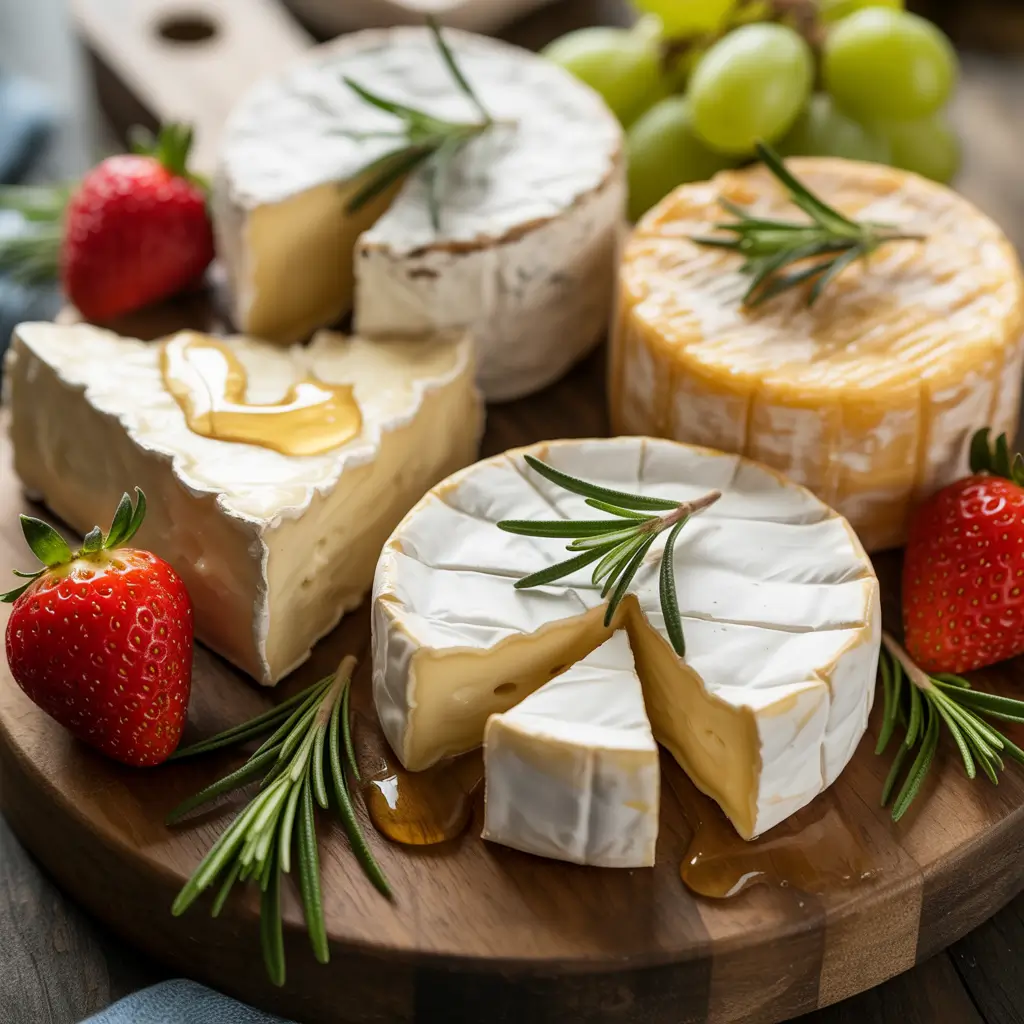A Complete Guide to Soft Cheeses: Types, Uses, and How They’re Made
Introduction:
Soft cheeses are known for their creamy texture and delicate flavors, making them a favorite in many dishes. From classic French Brie to Italian Ricotta, these cheeses offer versatility and richness, whether enjoyed on their own or as part of a recipe. In this guide, we’ll explore the different types of soft cheeses, how they’re made, and creative ways to use them. Whether you’re a cheese lover or just discovering soft cheeses, there’s something for everyone to enjoy
PrintSoft Cheeses: Discover the Best Varieties and Their Unique Flavors
This classic comfort dish combines the lightness of fresh ricotta cheese with tender spinach and herbs, all tucked inside jumbo pasta shells. Baked to golden perfection under a layer of mozzarella and savory marinara sauce, these ricotta stuffed shells are a cozy, creamy centerpiece for any family dinner. Perfect for vegetarians and cheese lovers alike, the soft cheese melts into every bite, delivering flavor and comfort in one warm dish.
- Prep Time: 20 minutes
- Cook Time: 25 minutes
- Total Time: 45 minutes
- Yield: 4 1x
- Category: ~390
- Method: baking
- Cuisine: frensh
Ingredients
-
20 jumbo pasta shells
-
2 cups ricotta cheese (fresh or whole milk)
-
1 cup shredded mozzarella cheese
-
2 cups fresh spinach, finely chopped
-
2 garlic cloves, minced
-
1 egg
-
Salt and pepper to taste
-
2 cups marinara sauce
-
1 tablespoon olive oil
-
Fresh basil (optional garnish)
Instructions
-
Preheat your oven to 375°F (190°C).
-
Boil the pasta shells in salted water until al dente. Drain and set aside.
-
Mix ricotta, spinach, garlic, egg, salt, and pepper in a large bowl.
-
Stuff each shell with a generous spoonful of the mixture.
-
Layer a baking dish with a cup of marinara sauce. Place the filled shells on top.
-
Top the shells with the remaining sauce and sprinkle with mozzarella cheese.
-
Bake uncovered for 25 minutes or until bubbly and golden.
-
Garnish with fresh basil before serving.
Notes
Swap ricotta for cottage cheese or goat cheese for different flavor profiles.
Nutrition
- Calories: ~390
- Fat: 18g
- Carbohydrates: 34g
- Protein: 17g
Keywords: Soft Cheeses
What is Soft Cheese?
Soft cheese is a type of cheese known for its creamy texture and high moisture content. These cheeses are usually soft and spreadable, offering a smooth, rich mouthfeel. Unlike their harder counterparts, soft cheeses are often consumed fresh or after a brief aging process, which preserves their delicate texture and mild flavor.
Defining Soft Cheese
Soft cheese is typically made from milk—be it cow, goat, or sheep. Its defining trait is its higher moisture content, which results in a velvety, creamy texture that sets it apart from firmer cheeses. These cheeses are generally younger, with shorter aging periods, giving them a fresher taste. Whether spread on bread, melted into dishes, or simply enjoyed on their own, soft cheeses offer a luxurious eating experience.
Key Characteristics of Soft Cheese
The hallmark of soft cheeses is their rich, creamy consistency, which is a direct result of their moisture-rich composition. Unlike semi-hard or hard cheeses, soft cheeses are made to maintain a smoother, more spreadable texture. These cheeses are often made using specific bacteria or molds, which contribute to their unique flavor profiles. Due to their higher water content, soft cheeses typically have a shorter shelf life compared to firmer varieties, which is why they are best enjoyed soon after production.
The Best Soft Cheeses to Try
Soft cheeses are celebrated for their smooth, creamy textures and diverse flavors that elevate any meal. Here’s a list of the top soft cheeses to try, each offering a unique taste experience:
-
Brie: Known as the “Queen of Cheeses,” Brie has a delicate, buttery flavor and a soft, velvety texture, perfect for pairing with crackers or fresh fruits.
-
Camembert: This cheese shares similarities with Brie but boasts a stronger, more earthy flavor. Its creamy interior and rich aroma make it ideal for pairing with nuts and a glass of wine.
-
Ricotta: Light and mildly textured, Ricotta is often used in Italian cooking, such as in lasagna or desserts like cannoli, offering a subtle, creamy taste.
-
Mascarpone: Creamy and luxurious, Mascarpone is commonly found in desserts like Tiramisu and creamy pasta dishes, contributing a rich, slightly sweet flavor.
-
Saint-André: A triple-cream French cheese, Saint-André is rich and buttery, perfect for indulgent platters and pairing with sweet elements like figs or honey.
These cheeses stand out not only for their creamy texture but also for their versatility. Whether melted, spread, or paired with fruits and wines, they offer endless possibilities for enhancing your meals.
Why These Are the Best
These soft cheeses are celebrated for their versatility, texture, and flavors. Whether you’re enjoying them with fruits, nuts, or wine, they each bring something special to the table. Brie and Camembert are perfect for melting, while Ricotta and Mascarpone shine in both savory and sweet dishes.
French Soft Cheeses – The Cream of the Crop

France is widely known for its exceptional variety of soft cheeses, many of which have become staples in culinary traditions worldwide. French soft cheeses are revered for their rich flavors, unique textures, and centuries-old craftsmanship. Here are some of the most iconic French soft cheeses you should definitely try:
Famous French Soft Cheeses
-
Brie de Meaux: Often considered the finest of all Bries, Brie de Meaux is a rich, creamy cheese with a delicate, buttery flavor and a soft, bloomy rind. It’s a quintessential cheese that has stood the test of time, adored for its perfect balance of creaminess and subtle tang.
-
Camembert de Normandie: Hailing from the Normandy region, Camembert de Normandie is a soft, creamy cheese with an intense, earthy flavor. Its rind is covered in white mold, and it’s known for its strong, aromatic profile, making it an unforgettable cheese experience.
-
Saint-André: This indulgent, triple-cream French cheese is known for its ultra-creamy texture and rich, buttery flavor. It has a luxurious mouthfeel that’s perfect for special occasions and pairs wonderfully with fresh fruits or a drizzle of honey.
-
Neufchâtel: Originating in the Normandy region, Neufchâtel is similar to Camembert but with a firmer texture. It has a tangy, slightly salty flavor and is often molded into heart shapes, making it a favorite for festive occasions and romantic cheese boards.
Why French Soft Cheeses Are So Special
What sets French soft cheeses apart is their long history and the meticulous craftsmanship behind each variety. The French take immense pride in their cheese-making traditions, with many soft cheeses having AOC (Appellation d’Origine Contrôlée) status, which ensures they are made to the highest standards in specific regions. French soft cheeses often have distinctive flavors, created by the unique climates, soil, and animals that produce the milk.
Whether you’re savoring Brie de Meaux’s smooth richness or enjoying the pungent depth of Camembert de Normandie, French soft cheeses offer a complex yet approachable flavor profile that’s perfect for pairing with wine, bread, and fresh fruit.
How Are Soft Cheeses Made?
The process of making soft cheese is an art that involves specific techniques to achieve the creamy texture and delicate flavor that define this type of cheese. While the exact process may vary slightly depending on the cheese variety, the basic steps are generally the same. Here’s a breakdown of how soft cheeses are made:
The Cheese-Making Process
-
Milk Preparation: The process starts with high-quality milk, which can come from cows, goats, or sheep. The milk is heated to a specific temperature, which allows the beneficial bacteria and enzymes to work their magic.
-
Adding Bacteria and Rennet: To begin the curdling process, bacteria are added to the milk. These bacteria help sour the milk, turning it into curds. An enzyme called rennet is added to the milk, which causes it to thicken and separate into curds (solid) and whey (liquid).
-
Cutting and Draining the Curd: The curds are carefully cut into small pieces, which helps release more whey. The curds are then left to drain, allowing the whey to separate fully. This step is crucial in determining the final texture of the cheese.
-
Molding and Pressing: The curds are placed into molds, where they’re gently pressed to remove any remaining whey. In the case of soft cheeses, the pressing is light to preserve moisture. Some soft cheeses, like Brie, are not pressed at all but allowed to drain naturally.
-
Aging (or Not): Unlike hard cheeses, soft cheeses typically undergo a much shorter aging process. Some soft cheeses like Ricotta may not be aged at all, while others, such as Brie or Camembert, are left to mature for a few weeks. During this time, the cheese develops its signature creamy texture and flavor.
-
Adding Mold (Optional): For cheeses like Brie and Camembert, a mold culture is added to the surface of the cheese to create the distinctive bloomy rind. This rind protects the cheese and contributes to its flavor and texture.
The Role of Cultures and Rennet
Cultures (specific strains of bacteria) and rennet play an essential role in soft cheese production. The bacteria contribute to the cheese’s flavor, creating its tangy or mild notes, while rennet is responsible for coagulating the milk. The combination of these factors gives each soft cheese its unique flavor and creamy texture.
Why Soft Cheeses Have a Creamy Texture
The high moisture content in soft cheeses is what gives them their characteristic creamy texture. Since soft cheeses are aged for a shorter period than hard cheeses, they retain more water, making them rich and spreadable. This moisture is what creates the smooth mouthfeel that’s loved by cheese enthusiasts.for more inspiration visit https://fr.pinterest.com/gadeserahmed/
The Flavor Characteristics of Soft Cheeses

Soft cheeses are known for their smooth, creamy textures and diverse flavors, ranging from mild to tangy. Their taste is shaped by factors like milk type, aging, and bacteria used in production.
What Makes Soft Cheeses So Creamy?
The high moisture content in soft cheeses gives them a spreadable consistency, while their higher fat content adds to the rich, velvety texture. These factors contribute to their signature creamy mouthfeel.
Taste Profiles of Popular Soft Cheeses
-
Brie: Buttery, creamy, with a slight earthy note. Its edible rind adds a mild, mushroom-like taste.
-
Camembert: Rich and slightly pungent, with a creamy center and tangy rind.
-
Ricotta: Mildly sweet, light, and slightly grainy. It’s versatile for both savory and sweet dishes.
-
Mascarpone: Sweet, rich, and velvety, making it perfect for desserts like Tiramisu.
-
Saint-André: Ultra-creamy and buttery, with a slight tang.
Pairing Soft Cheeses with Food
-
Brie: Pairs well with fresh fruits like grapes and Chardonnay.
-
Camembert: Matches with Pinot Noir or Sauvignon Blanc, and fruits like figs.
-
Ricotta: Works in pasta or desserts, paired with a light Pinot Grigio.
-
Mascarpone: Pairs with chocolate, berries, or sweet wines like Moscato.
-
Saint-André: Pairs with Bordeaux or Sauternes, and fruits like figs or honey.
The Health Benefits of Soft Cheeses
Baked dishes with soft cheeses add comfort and flavor to your meals While soft cheeses are often considered indulgent, they also offer several nutritional benefits when consumed in moderation. Packed with essential nutrients, soft cheeses can be a valuable addition to a balanced diet.
Are Soft Cheeses Healthy?
Soft cheeses are rich in protein, calcium, and vitamins, which support overall health. The protein in cheese helps build and repair tissues, while calcium is essential for strong bones and teeth. Soft cheeses also contain vitamin A, which is important for eye health, and vitamin B12, which supports nerve function.
Health Benefits of Common Soft Cheeses
-
Brie: A good source of calcium and protein, Brie is also lower in sodium compared to some other cheeses.
-
Camembert: Contains healthy fats and probiotics, which promote gut health and improve digestion.
-
Ricotta: Low in fat, Ricotta is rich in protein, making it a good option for muscle repair and growth.
-
Mascarpone: While higher in fat, Mascarpone provides a dose of calcium and vitamin A.
-
Saint-André: High in fat but offers calcium, protein, and beneficial vitamins.
Choosing Healthier Soft Cheeses
If you’re looking to enjoy the benefits of soft cheese without excess fat or sodium, choose varieties made from organic or grass-fed milk. These options often contain higher amounts of beneficial Omega-3 fatty acids. Additionally, watch portion sizes to avoid consuming too many calories from fat.
Soft Cheese Recipes to Try
Soft cheeses are incredibly versatile and can be used in both savory and sweet dishes. Whether you’re looking to create a quick snack or a gourmet meal, soft cheeses can elevate any recipe. Here are a few delicious recipes featuring soft cheeses that are sure to impress:
1. Brie Baked with Honey and Almonds
This simple yet elegant appetizer is perfect for any occasion. The creamy Brie melts beautifully when baked, and the honey adds a touch of sweetness, while the almonds provide a nice crunch.
Ingredients:
-
1 wheel of Brie
-
2 tablespoons of honey
-
1/4 cup of sliced almonds
Instructions:
-
Preheat the oven to 350°F (175°C).
-
Place the Brie on a baking sheet and drizzle with honey.
-
Sprinkle the almonds over the top and bake for 10-15 minutes, until the cheese is soft and bubbly.
-
Serve with crackers, baguette slices, or fresh fruit.
2. Ricotta Pancakes
Fluffy, creamy, and light, Ricotta pancakes are a perfect breakfast or brunch option. The Ricotta adds moisture and richness, making the pancakes melt in your mouth.
Ingredients:
-
1 cup of Ricotta cheese
-
1 cup of flour
-
2 eggs
-
1/2 cup of milk
-
1 teaspoon of vanilla extract
Instructions:
-
In a bowl, mix the Ricotta, eggs, milk, and vanilla.
-
Add the flour and stir until just combined.
-
Heat a non-stick pan over medium heat and cook small pancakes for about 2-3 minutes on each side.
-
Serve with fresh berries, syrup, or a dusting of powdered sugar.
3. Camembert Salad
A fresh and creamy salad that combines the rich flavor of Camembert with the freshness of mixed greens, nuts, and a light vinaigrette dressing.
Ingredients:
-
1 small wheel of Camembert, sliced
-
4 cups of mixed greens (arugula, spinach, etc.)
-
1/4 cup of walnuts, chopped
-
1 tablespoon of olive oil
-
1 tablespoon of balsamic vinegar
Instructions:
-
In a large bowl, toss the mixed greens and walnuts.
-
Drizzle with olive oil and balsamic vinegar, and toss to coat.
-
Arrange the Camembert slices on top of the salad.
-
Serve immediately as a light lunch or appetizer.
4. Mascarpone Cheesecake
Mascarpone cheese makes for a rich and creamy cheesecake filling. This recipe is perfect for those who love indulgent desserts.
Ingredients:
-
1 1/2 cups of Mascarpone cheese
-
1/2 cup of sugar
-
3 eggs
-
1 teaspoon of vanilla extract
-
1/2 cup of graham cracker crumbs (for the crust)
Instructions:
-
Preheat the oven to 325°F (160°C).
-
In a bowl, mix the Mascarpone cheese, sugar, eggs, and vanilla extract until smooth.
-
Press the graham cracker crumbs into the bottom of a baking dish and pour the Mascarpone mixture over the crust.
-
Bake for 30-35 minutes until the cheesecake is set.
-
Let it cool and refrigerate before serving with fresh fruit or a drizzle of caramel sauce.
FAQs About Soft Cheese
What Is Soft Cheese Called?
Soft cheese refers to any cheese that has a creamy, smooth texture and a high moisture content. Some well-known soft cheeses include Brie, Camembert, Ricotta, and Cream Cheese. These cheeses typically have a short aging period, which keeps them soft and spreadable.
What Is the Best Soft Cheese?
The “best” soft cheese depends on personal preference, but some of the top choices include:
-
Brie: A mild, creamy cheese with a buttery flavor.
-
Camembert: Rich and earthy, with a creamy interior.
-
Ricotta: Light and slightly grainy, perfect for both savory and sweet dishes.
-
Mascarpone: Sweet and creamy, ideal for desserts.
Each of these cheeses offers something unique, whether you prefer mild and buttery or rich and earthy flavors.
What Is the Name of French Soft Cheese?
France is famous for its soft cheeses. Some of the most popular French varieties include:
-
Brie de Meaux: A creamy, buttery cheese from the Île-de-France region.
-
Camembert de Normandie: A soft, creamy cheese from Normandy with an earthy flavor.
-
Saint-André: A rich, triple-cream cheese known for its luxurious texture.
-
Neufchâtel: A tangy, slightly firmer cheese often molded into heart shapes.
How Are Soft Cheeses Made?
Soft cheeses are made by curdling milk with the help of bacteria and rennet. The curds are separated from the whey, then placed in molds to shape them. Unlike hard cheeses, soft cheeses have a higher moisture content and undergo a shorter aging process, which gives them their smooth, creamy texture. Some soft cheeses, like Brie and Camembert, also develop a bloom of mold on the rind, which adds flavor and texture. for more deliciouc recipres look at
Conclusion
Soft cheeses are a delightful and versatile ingredient that can be enjoyed in many ways—from simple cheese boards to decadent recipes. With a wide variety of flavors and textures, there’s a soft cheese for everyone, whether you’re a casual cheese lover or a dedicated aficionado. From Brie to Ricotta, these cheeses offer endless possibilities for snacking, cooking, and pairing with wine.
-



